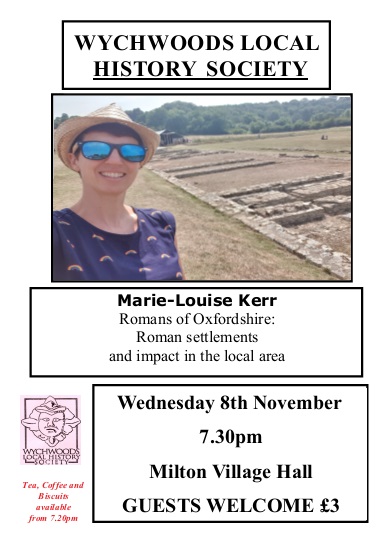
Speaker: Marie-Louise Kerr
Subject: Romans of Oxfordshire: Roman settlements and their impact in the local area .
A fine turnout of 60+ enjoyed our final talk of 2023, when Marie-Louise Kerr talked with obvious enthusiasm on the subject of everyday life in Roman Britain.
Romans in Britain: Background
Marie-Louise began with the background context before and after the arrival of the Romans, referring particularly to accounts of pre-Roman Britain in Ptolemy’s Geography, and to examples of pre-Roman artefacts. These demonstrate, via some examples she showed, of excavated or found votive offerings, of a living, sophisticated culture among the tribes of the Iron Age.
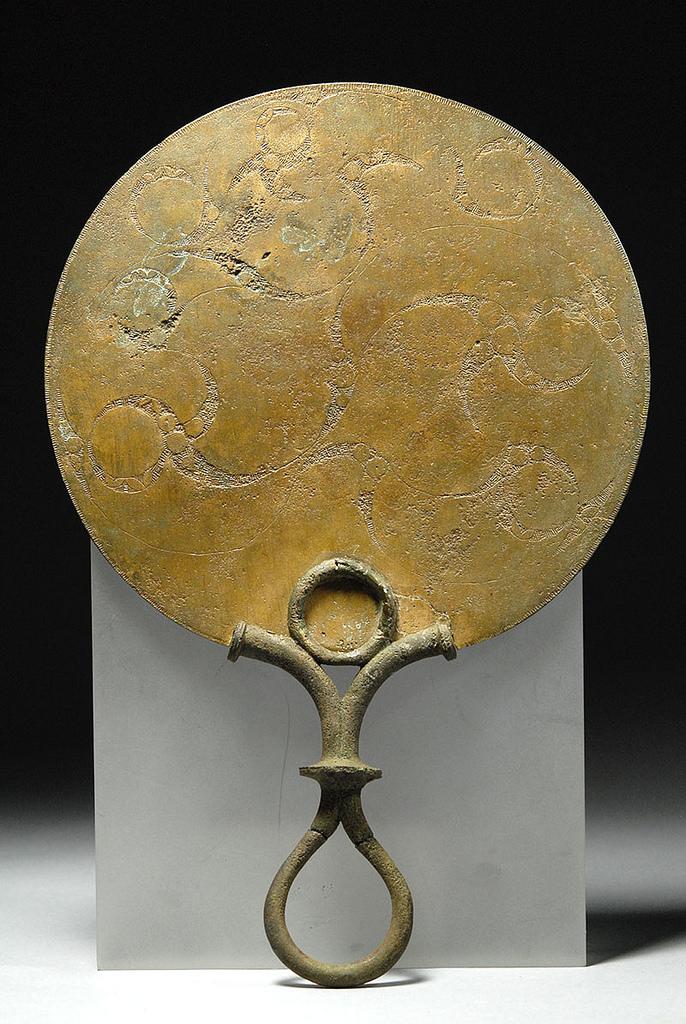
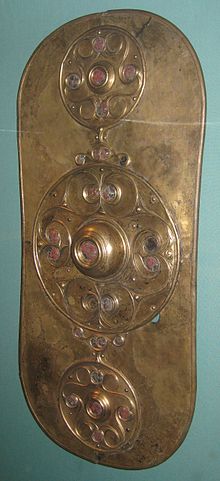
So, with the arrival of the Roman Legions under the Emperor Claudius in 43 AD, we have a mixed story. This is a story of a consolidation of pre-invasion diplomatic and trading relationships exemplified for example in a Romanised version of the Atrebatean triple-tailed horse. It is also a story of insurrection and revolt as epitomised by the Iceni rebellion under Boudicca, which saw the destruction of the vital port of Londinium in a wave of other devastating but temporary setbacks for the new Roman era in Britain.
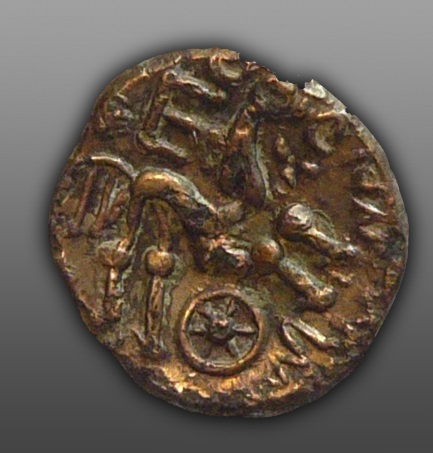
A Soldier’s Tale
As an example of an individual who lived on the cusp of the worlds of Empire and Britain, Marie Louise mentioned the soldier of the Second Augustan Legion, Lucius Valerius Geminus. His repurposed and fragmented gravestone was unearthed at Alchester near Bicester. Details here.
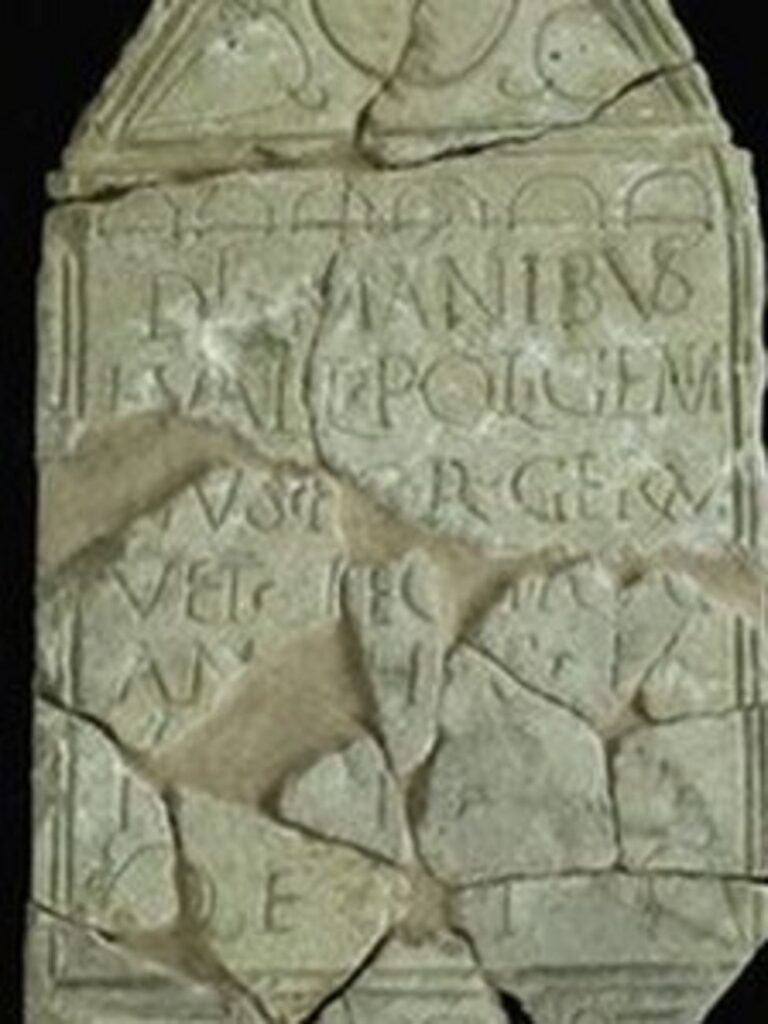
Here was a soldier who came with his legion to Britain, and took the option after 30 years’ service, to settle with his plot of land. By inference, this would have been a common pattern.
Roman Villas
By using examples of the many Roman villas in our region, Marie Louise was able to introduce simple insights in the everyday lives of citizens of the time. Particular examples are the engraved glass beakers found by the South Oxfordshire Archaeological Group at a recent dig at Goring Roman Villa. “This may help” and “Give this to a loved one” are slogans we can all relate to.
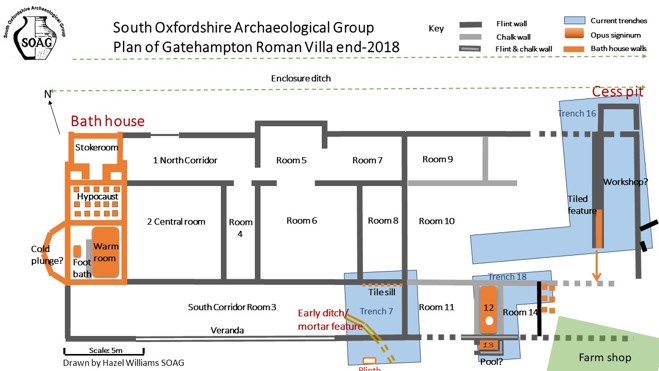
The Goring Roman Villa is an example of an “Aisled” villa, one of two types of construction. The villa at North Leigh is an example of the “Courtyard” construction, with a communal space flanked by the living accommodation and bathhouses common to both types. The recent excavations by the Earth Trust at Wittenham Clumps offers a tantalising glimpse of the social hierarchy of the time – a villa with at least 15 nearby Iron-Age style round houses.
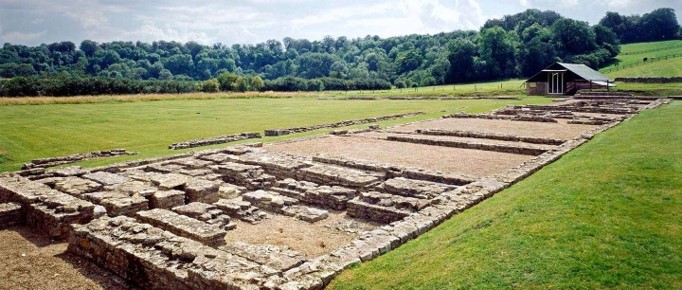
With these and several other examples of villa excavations, as well as examples of the reconstructions at Segodonum ( Wallsend) at Butser Ancient Farm in Petersfield , with its trompe d’oeil décor, we had interesting insights into how our Oxfordshire villas might have been set up, designed and furnished.
About Marie Louise Kerr
Marie-Louise’s background is in Ancient History and as a museum curator. She has over 15 years’ experience in the heritage sector, looking after museum collections and developing exhibitions around the country.
These have included archaeology, history of science and textiles collections as well as military and social history artefacts. She set up her Curator Without Museum talks business when she was between collections, but she is now Curator at West Berkshire Museum

